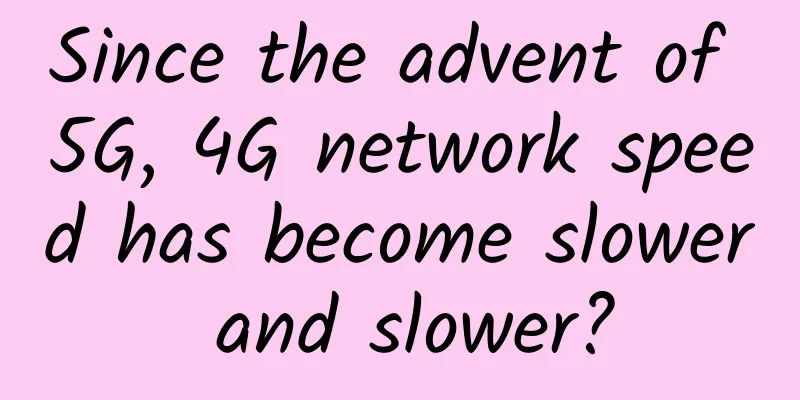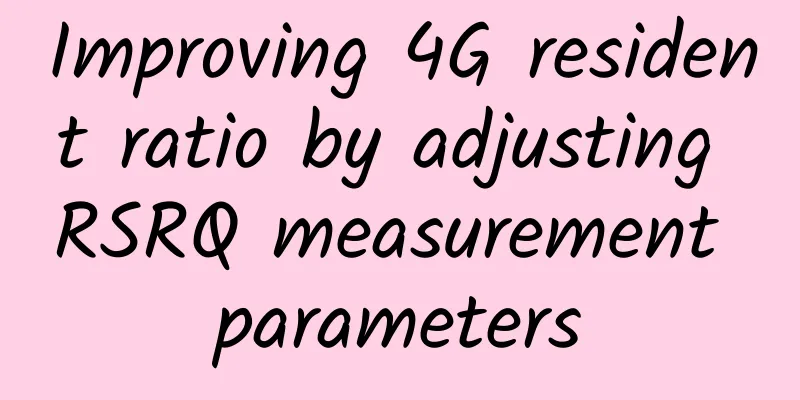5G network needs to save money by relying on these four key technologies

|
This article is reprinted from the WeChat public account "Network Optimization Mercenary", the author is in correspondence. To reprint this article, please contact the WeChat public account "Network Optimization Mercenary". As we all know, for operators to achieve commercial success in 5G, they must not only expand new businesses to increase revenue sources, but also tighten their belts to save TCO costs as much as possible. Otherwise, how can they talk about sustainable development? So what are the key “money-saving” technologies in the 5G era? Virtualization Traditional dedicated telecommunications equipment has single functions and closed vertical integration of software and hardware. After each network upgrade by operators, various new and old dedicated equipment are stacked, making the network more and more complex, the space in the computer room more and more tight, and the CAPEX and OPEX costs continue to rise. NFV (Network Function Virtualization) decouples network functions from traditional dedicated hardware devices and runs virtualized network functions (software) on general-purpose servers. This eliminates the need to bind specific network functions to dedicated hardware one-to-one as in the past. Instead, various network functions can be flexibly deployed on unified general-purpose hardware resources. This allows the scale effect of general-purpose hardware to reduce costs and improve the flexibility of network deployment. Simply put, traditional dedicated telecommunications equipment is like the dedicated electronic devices of the past, such as calculators, cameras, and game consoles, which have single functions; while NFV is like today's smartphone + APP era, where various APPs such as cameras and games run on a unified smartphone hardware platform. Cloud Although NFV breaks the chimney-style architecture of vertical integration of software and hardware in traditional telecommunications equipment and achieves the separation of software and hardware, the decoupled VNF software is still "bulky" and not flexible enough. Therefore, VNF is further split into smaller, modular microservices (network function services) and deployed in containers, which can further improve the flexibility and agility of software development. This is the so-called "cloud-native design". The 5G core network is based on such a design. At the same time, stateless design is another major feature of cloud-native, which means separating the context information of traditional network elements from network function software, so that software can be flexibly migrated between containers, thereby improving elasticity and scalability. Cloud-native design can accelerate the launch of new services, respond to the ever-changing market in an agile manner, and lay the foundation for flexible customization of network slices. Network Slicing In the past 2/3/4G era, there were few types of network services, mainly providing voice, data and video services. In the past, networks also provided these limited services in a "one-size-fits-all" manner. The network slicing technology in the 5G era cuts a physical network into multiple isolated virtual sub-networks to meet the service requirements of different use cases such as VR/AR, smart factories, smart cities, and autonomous driving. On the one hand, network slicing can flexibly and efficiently share and utilize network physical resources, thereby maximizing the value of the network; on the other hand, network slicing has a deterministic SLA guarantee, which can enable a large number of 5G innovative applications, thereby increasing revenue sources. In the future, the more 5G innovative applications there are, the more slices there are, the higher the utilization rate of network resources, and the higher the revenue of operators. automation On the one hand, networks are becoming increasingly complex in the 5G era, and automation is needed to reduce operation and maintenance costs. On the other hand, 5G network slices must be deployed agilely and be able to guarantee SLA after deployment, which cannot be accomplished by manpower and also requires network automation. For example, a factory proposed to the operator the need to realize applications such as automated robotic arms, AGV, and asset tracking through 5G networks. The operator needs to be able to quickly complete resource allocation, slice configuration, and slice activation based on the network capabilities such as network speed, latency, and reliability required by these applications. This process may be required to be completed within a few hours or even minutes, which is impossible to achieve by relying on traditional manual methods. At the same time, after activation, real-time monitoring and guarantee of slice performance are required. If the slice network fails or even interrupts, the system needs to quickly reallocate resources through orchestration management, or switch the connection to a backup link. Otherwise, it may cause economic losses to the company, which is also impossible to accomplish with traditional manual operation and maintenance methods, and also requires network automation. In fact, the massive data generated by 5G's large bandwidth and large-scale connected networks combined with the ever-improving AI technology make it possible to build data-driven intelligent and automated networks in the 5G era: AI can analyze and learn from massive data and make better decisions based on the data. For example, in the RAN network, AI can predict traffic patterns and estimate that a certain cell will have no traffic or very low traffic in a certain period of time, so that the carrier can be shut down autonomously to save device power consumption and reduce the electricity cost of the 5G network, which is receiving more and more attention. In the 5G automated network, there are two main closed loops: one is orchestration and the other is service assurance. The role of orchestration is to allocate network resources according to customized services; the role of service assurance is to ensure consistent network SLA. Both closed loops are based on the collection of global data from end to end and are implemented based on AI analysis engines. |
<<: One year later, let’s talk about Open RAN again
>>: First time: China achieves major breakthrough in quantum relay
Recommend
80VPS: AMD Ryzen+NVMe Los Angeles Cera Data Center KVM annual payment starts at 349 yuan
80VPS is a well-established Chinese hosting compa...
Analysis: Advantages and limitations of wireless data centers
For data center operators, the idea of a wirele...
Wireshark network protocol analysis: interpreting the TCP protocol and understanding TCP three-way handshake and four-way handshake
TCP Transmission Control Protocol is a connection...
DogYun's fourth anniversary: 30% off on Elastic Cloud/20% off on Classic Cloud, 40% off on new Chongqing Cloud, 10 yuan free for every 100 yuan deposit, 100 yuan off for dedicated servers
Yesterday morning we shared information about Dog...
2018 Yunnan-Huawei Software Industry Summit was held on December 20
The 2018 Yunnan-Huawei Software Industry Summit w...
Secretly reducing 4G network speed to promote 5G? China Mobile responded for the first time, and the operator may have been wronged
Since the promotion of 5G mobile phones and packa...
When wireless communication officially becomes a strategic energy source: The butterfly flaps its wings in the 5G era
Speaking of 5G, what do you think of first? If yo...
Develop a comprehensive budget plan for your data center
Data center budget planning is a difficult task t...
Why Microsoft won't rebuild Windows based on the Linux kernel
A few weeks ago, the opinion of Eric S Raymond, a...
Ethernet VS PON network: Which one is more suitable for enterprise campuses?
The trend of optical fiber replacing copper fiber...
Experts discuss: How will 5G accelerate after the epidemic?
It was supposed to be a time to get rid of the ol...
How to build the “dual gigabit” expressway in 2021?
[[374332]] At the 2021 National Industrial and In...
The two sessions hotly discussed the sharing economy: shared CDN becomes an enterprise-level benchmark
Ever since Kevin Kelly predicted the bright prosp...
Home Networking Guide - How to Create WiFi Throughout Your Home During the Renovation Season
September and October are the golden months. Now ...









